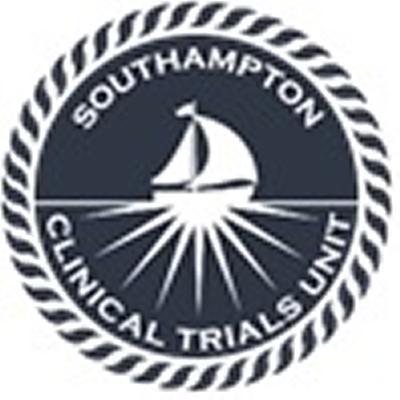Q&A with Southampton CTU director Professor Gareth Griffiths

Ahead of International Clinical Trials Day on Sunday 20 May, we sit down with Professor Gareth Griffiths and talk to him about what the University’s Southampton Clinical Trials Unit brings to the clinical and scientific landscape in Southampton, the rest of the UK and internationally.
What is the role of the Southampton Clinical Trials Unit (SCTU)?
The Southampton Clinical Trials Unit (SCTU) is a registered and regulated CTU based at the University of Southampton with expertise in the design, conduct and analysis of multi-centre interventional clinical trials. We work in partnership with investigators to deliver high quality trials that will directly influence routine clinical practice. We collaborate both nationally and internationally. Locally we work with both local clinical scientists from the University and clinicians at University Hospital Southampton NHS Foundation Trust to deliver trials that can provide the evidence to change practice and improve outcomes for patients.
What research areas does it focus on?
The unit has particular expertise in multi-centre phase II & phase III interventional trials both nationally and internationally but also works with local investigators on a variety of other study types. All registered and regulated CTUs in the UK tend to specialize in particular disease areas as it is more efficient. A strength of this unit is being situated with the new Centre for Cancer Immunology and we have a number of these immunology studies underway and being set-up.

What are the different phases of clinical trials and what do they aim to do?
Clinical trials are divided into different stages, called phases. There are three main phases of clinical trials – phases 1 to 3. But some trials have an earlier stage called phase 0, and there are some phase 4 trials done after a drug has been licensed.
Phase 0 trials
Phase 1 trials are usually the earliest trials of treatments (usually drugs) in people. But your doctor might ask if you would like to join a phase 0 study. These studies aim to find out if a drug behaves in the way researchers expect it to from their laboratory studies.
Phase 0 studies usually only involve a small number of people and they only have a very small dose of a drug. The dose of the drug is too small to treat your disease, but the types of things researchers are looking for include
· Whether the drug reaches the disease site
· How the drug behaves in the body
· How cells in the body respond to the drug
You might have extra scans and give extra samples of blood and tissue (biopsies) to help the researchers work out what is happening.
Because the dose of the drug used in phase 0 trials is so small you won’t benefit from the drug. But you are also less likely to have side effects.
The main aim of these studies is to speed up the development of promising new drugs. Testing them in very small doses in humans rather than in animals can be more reliable and means scientists get useful information more quickly.
Phase 1 trials
Phase 1 is sometimes written as phase I. They are usually small trials, recruiting only a few patients.
When laboratory testing shows that a new treatment might help, phase 1 trials are done to find out
· How much of the treatment is safe to give
· What the side effects are
· How the body copes with the treatment
Patients are recruited very slowly onto phase 1 trials so, although they don't recruit many patients they can take a long time to complete. The first few patients to take part (called a cohort or group) are given a very small dose of the drug (if this is the treatment for example). If all goes well, the next group have a slightly higher dose. The dose is gradually increased with each group. The researchers monitor the effect of the drug until they find the best dose to give. This is called a dose escalation study.
In a phase 1 trial you may have lots of blood tests because the researchers look at how the drug or treatment affects you. They also look at how your body copes. They record any side effects.
People taking part in phase 1 trials often have advanced illness. They have usually had all the treatment available to them. They may benefit from the new treatment in the trial but many won't. Phase 1 trials aim to look at doses and side effects. This work has to be done first, before we can test the potential new treatment to see if it works.
Phase 2 trials
Not all treatments tested in a phase 1 trial make it to a phase 2 trial. Phase 2 is sometimes written as phase II.
Phase 2 trials aim to find out
· If the new treatment works well enough to test in a larger phase 3 trial
· Which types of disease the treatment works for
· More about side effects and how to manage them
· More about the best way to use it
Although these treatments have been tested in phase 1 trials, you may still have side effects that the doctors don't know about.
Phase 2 trials are often larger than phase 1. There may be up to 100 or so people taking part. Sometimes in a phase 2 trial, a new treatment is compared with another treatment already in use, or with a dummy drug (placebo). If the results of phase 2 trials show that a new treatment may be as good as existing treatment, or better, it then moves into phase 3.
Some phase 2 trials are randomised. This means the researchers put the people taking part into treatment groups at random.
Phase 3 trials
These trials compare new treatments with the best currently available treatment (the standard treatment). Phase 3 is sometimes written as phase III. These trials may compare
· A completely new treatment with the standard treatment
· Different doses or ways of giving a standard treatment
· A new way of giving treatment with the standard way
Phase 3 trials usually involve many more patients than phase 1 or 2. This is because differences in success rates may be small. So, the trial needs many patients to be able to show the difference.
Sometimes phase 3 trials involve thousands of patients in many different hospitals and even different countries. Most phase 3 trials are randomised. This means the researchers put the people taking part into treatment groups at random.
Phase 4 trials
Phase 4 trials are done after an intervention has been shown to work is safe. Phase 4 is sometimes written as phase IV. The main reasons for running phase 4 trials are to find out:
· More about the side effects and safety of the treatment
· What the long term risks and benefits are
· How well it works when it’s used more widely
How can someone get on a clinical trial?
You can ask your doctor or a patient organisation if they know of any clinical trials that you may be eligible to join. You can also search for information on a number of websites and register your interest in taking part in research. The main ones are:
UK Clinical Trials Gateway - The UK Clinical Trials Gateway (UKCTG) website pulls through information about clinical trials and other research from several different UK registers. You can also search the UKCTG site in various ways to find trials relevant to you, and you can contact researchers yourself.
WHO International Clinical Trials - The World Health Organization's Clinical Trials Search Portal provides access to clinical trials in countries all around the world.
Charities - For some conditions, you can find out about clinical trials from the websites of charities. For example Cancer Research UK or Arthritis Research UK.
What impact do clinical trials have on patient treatment and the NHS?
Clinical trials impact patient treatment and the NHS a number of different ways. They can help by preventing illnesses by testing a vaccine, detecting or diagnosing illnesses by testing a scan or blood test or treating illnesses by testing new or existing medicines. They are able to find out how best to provide psychological support or how people can control their symptoms or improve their quality of life – for example, by testing how a particular diet affects a condition. Many clinical trials are designed to show whether new medicines work as expected. These results are then used to decide whether to allow the company making the medicine to market it for a particular use with a particular group of patients.
How many people are on CTU trials at the moment?
In total over 10,000 patients have been involved in trials run from the SCTU. Nationally the figure is close to 1 million patients involved in clinical research studies each year.
The CTU has just moved in to the Centre for Cancer Immunology, how do you feel about being in the new Centre?
The whole unit is delighted to be in the new building. It feels both a privilege and an honour to have such a new and modern building to work in. The synergy associated with being close to our colleagues will ensure more successful collaboration in the future on trials that will make a real difference to patients.
What excites you most about the future of clinical trials in Southampton?
Creating, defining and testing a new treatment for the benefit of patients is like putting together a complicated jigsaw whilst the table you are working on is moving about! It isn’t easy and the more pieces you have in place to start with the faster you become. Southampton has a unique combination of centres, institutes and units, the University, the UHS Trust, major charities and major charitable donors all working together with the mission to improve outcomes for patients. This means we have a unique opportunity here to maximise research outcomes for the benefit of patients nationally from here in Southampton.
